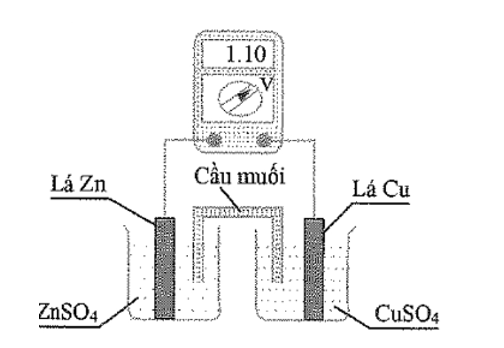Read the passage carefully
There are a number of natural disasters that can strike across the globe. Two that are frequently linked to one another are earthquakes and tsunamis. Both of them can cause a great amount of devastation when they hit. However, tsunamis are the direct result of earthquakes and cannot happen without them.
The Earth has three main parts. They are the crust, the mantle, and the core. The crust is the outer layer of the Earth. It is not a single piece of land. Instead, it is comprised of a number of plates. There are a few enormous plates and many smaller ones. These plates essentially rest upon the mantle, which is fluid. As a result, the plates are in constant -- yet slow motion. The plates may move away from or towards other plates. In some cases, they collide violently with the plates adjoining them. The movement of the plates causes tension in the rock. Over a long time, this tension may build up. When it is released, an earthquake happens.
Tens of thousands of earthquakes happen every year. The vast majority are so small that only scientific instruments can perceive them. Others are powerful enough that people can feel them, yet they cause little harm or damage. More powerful earthquakes, however, can cause buildings, bridges, and other structures to collapse. They may additionally injure and kill thousands of people and might even cause the land to change its appearance.
Since most of the Earth's surface is water, numerous earthquakes happen beneath the planet's oceans. Underwater earthquakes cause the seafloor to move. This results in the displacement of water in the ocean. When this occurs, a tsunami may form. This is a wave that forms on the surface and moves in all directions from the place where the earthquake happened. A tsunami moves extremely quickly and can travel thousands of kilometres. As it approaches land, the water near the coast gets sucked out to sea. This causes the tsunamis to increase in height. Minutes later, the tsunami arrives. A large tsunami - one more than ten meters in height - can travel, far inland. As it does that, it can flood the land, destroy human settlements, and kill large numbers of people.
Which of the following statements does paragraph 1 support?
A. A tsunami happens in tandem with an earthquake.
B. Earthquakes cause more destruction than tsunamis.
C. The most severe type of natural disaster is an earthquake.
Quảng cáo
Trả lời:
Ta cùng xem lại đoạn 1 sau khi đã gạch dưới các từ khóa trong câu hỏi và lựa chọn.
There are a number of natural disasters that can strike across the globe. Two that are frequently linked to one another are earthquakes and tsunamis. Both of them can cause a great amount of devastation when they hit. However, tsunamis are the direct result of earthquakes and cannot happen without them.
Lưu ý: “in tandem with” together, at the same time, "destruction" = devastation
Sau khi đọc lướt đoạn 1 và gạch từ khóa. Ta thấy earthquake và tsunami được nhắc đến là 2 thảm họa xảy ra theo thứ tự trước – sau, đều có mức độ tàn phá (nhưng không rõ cái nào nhiều hơn).
Suy ra đáp án D là đúng.
Hot: 1000+ Đề thi giữa kì 2 file word cấu trúc mới 2026 Toán, Văn, Anh... lớp 1-12 (chỉ từ 60k). Tải ngay
- Tuyển tập 30 đề thi đánh giá năng lực Đại học Quốc gia Hà Nội 2025 (Tập 1) ( 39.000₫ )
- Tuyển tập 15 đề thi Đánh giá tư duy Đại học Bách Khoa Hà Nội 2025 (Tập 1) ( 39.000₫ )
- Tuyển tập 30 đề thi đánh giá năng lực Đại học Quốc gia TP Hồ Chí Minh (2 cuốn) ( 140.000₫ )
- Tuyển tập 30 đề thi đánh giá năng lực Đại học Quốc gia Hà Nội, TP Hồ Chí Minh (2 cuốn) ( 150.000₫ )
CÂU HỎI HOT CÙNG CHỦ ĐỀ
Lời giải
Quan sát hình vẽ về sơ đồ pin điện hóa ta thấy vôn kế đo được giá trị 1,1 V nên suất điện động của pin điện hóa Zn-Cu mà sinh viên đo được là 1,1 V.
Chọn B
Lời giải
Trên cực âm (anot) của pin điện hóa xảy ra quá trình oxi hóa → Trong pin điện hóa Zn – Cu, bán phản ứng xảy ra ở cực âm của pin: Zn → Zn2+ + 2e.
Chọn A
Câu 3
A. Gió Tín Phong.
B. Gió mùa Đông Bắc.
Lời giải
Bạn cần đăng ký gói VIP ( giá chỉ từ 199K ) để làm bài, xem đáp án và lời giải chi tiết không giới hạn.
Câu 4
A. Sau Chiến lược “Chiến tranh cục bộ”.
B. Trước chiến lược “Chiến tranh đặc biệt”.
C. Sau chiến lược “Đông Dương hóa chiến tranh”.
Lời giải
Bạn cần đăng ký gói VIP ( giá chỉ từ 199K ) để làm bài, xem đáp án và lời giải chi tiết không giới hạn.
Câu 5
A. Nàng Mị Châu ngây thơ, khờ khạo, cả tin nên bị lừa.
B. Nàng Mị Châu quá coi trọng tình cảm cá nhân đến nỗi mù quáng.
C. Nàng Mị Châu yêu Trọng Thuỷ đến nỗi cho Trọng Thuỷ xem nỏ thần.
Lời giải
Bạn cần đăng ký gói VIP ( giá chỉ từ 199K ) để làm bài, xem đáp án và lời giải chi tiết không giới hạn.
Lời giải
Bạn cần đăng ký gói VIP ( giá chỉ từ 199K ) để làm bài, xem đáp án và lời giải chi tiết không giới hạn.
Câu 7
Lời giải
Bạn cần đăng ký gói VIP ( giá chỉ từ 199K ) để làm bài, xem đáp án và lời giải chi tiết không giới hạn.
